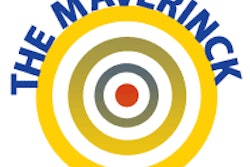
Statistics was never my favorite subject at university, but when my first head of department told me seven patients are enough for a statistically relevant "scientific" paper, I knew that I was in the wrong department.
Recently, when reading all the latest publications about screening mammography -- scientific, popular, and plainly commercial -- I started thinking about my knowledge of statistics. The reason was I didn't understand the statistics used or referred to in these articles. I only understood that annual or biennial breast screening is a benefit for women. It saves lives.
 Dr. Peter Rinck, PhD, is a professor of diagnostic imaging and the president of the Council of the Round Table Foundation (TRTF) and European Magnetic Resonance Forum (EMRF).
Dr. Peter Rinck, PhD, is a professor of diagnostic imaging and the president of the Council of the Round Table Foundation (TRTF) and European Magnetic Resonance Forum (EMRF).The question of why we need statistics has a simple answer: to predict what somebody's chances are to win. True statistics were developed for gambling in the 17th century, and then entered banking and the social sciences -- and finally medicine.
Florence Nightingale supposedly once said: "To understand God's thoughts we must study statistics." But -- which statistics?
Let's look at a simple example, applied to a screening study. At the beginning of the study, an average of 1,000 patients is healed every year; in the year after the introduction of our new screening method, 500 were healed. The success rate has dropped by 50%. In year two, the number tripled to 1,500 healed patients, a great success of 200%; year three shows 1,000 healed patients, a drop of 50%. The arithmetic mean of the percentages is a success rate of 33.3% per year: what a beautiful screening method! We should use the new technique everywhere.
This is a typical statistical assessment found in publications and done by politicians, pharmaceutical marketers, journalists in the infotainment industry, insurance and bank employees, and certain other people not to be named here. The statistical data is easily understood and sells the idea of screening (or a new drug, or anything you want to sell).
In reality, nothing has changed. Despite the ups and downs, after three years, the number of patients healed is the same as before: This kind of screening was not successful.
The statistical method to be used in this case is the geometric mean, which will give us a trend, a tendency of a set of n numbers by using the product of their values. The geometric mean is defined as the nth root (where n is the count of numbers) of the product of the numbers. In our case, we use the growth rates (or factors) of the three years. We take their product, the result's cube root, and subtract one: (0.5 × 3.0 × 0.67)⅓ -1. The geometric mean of our example is zero. Getting there is slightly more complicated than an arithmetic mean, but now the result is correct.
I do not want to even suggest that the statistics in mammography screening are wrong or not fitting. I only know that statistics in many medical papers are wrong. Many authors draw general conclusions from a limited number of case studies. Often, correlation and causation are confused: A correlation between two variables does not necessarily mean that one causes the other.
Commonly, you can kill any radiological paper by proving that the wrong statistical approach has been used. Don't write to me to complain. This column is not "Statistics 101." However, strange statistics are common practice.
Statistics as a mathematical discipline might be connected to science and philosophy; applied statistics are mostly not understood, and thus used incorrectly to draw wrong conclusions, in particular if spreadsheet-like statistical software is applied. Then they become a personal, ideological, or plain commercial marketing tool -- and should be seen as such: The secret magic of numbers is rather mystical.
Dr. Peter Rinck, PhD, is a professor of diagnostic imaging and the president of the Council of the Round Table Foundation (TRTF) and European Magnetic Resonance Forum (EMRF).
The comments and observations expressed herein do not necessarily reflect the opinions of AuntMinnieEurope.com, nor should they be construed as an endorsement or admonishment of any particular vendor, analyst, industry consultant, or consulting group.



















